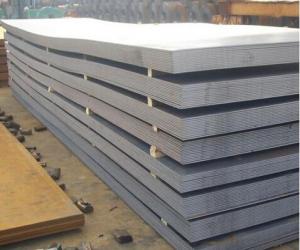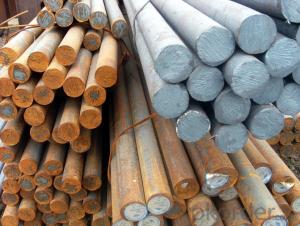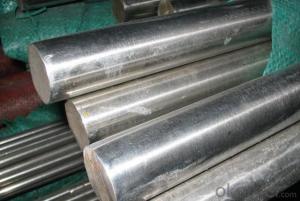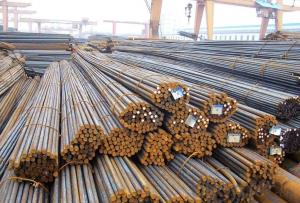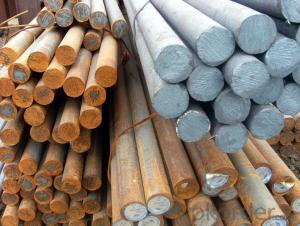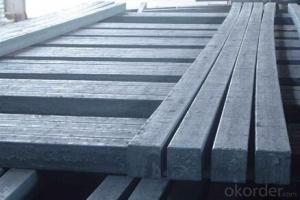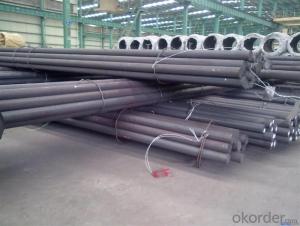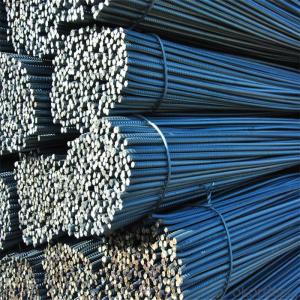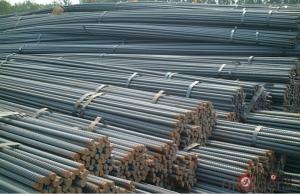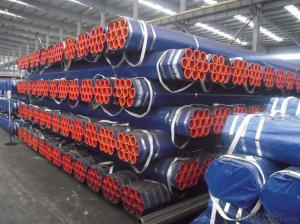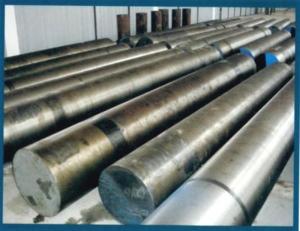Grade st 52.3 Mild Steel Plate Astm A36/ST37/ST52
- Loading Port:
- Tianjin
- Payment Terms:
- TT OR LC
- Min Order Qty:
- 3 m.t.
- Supply Capability:
- 100000 m.t./month
OKorder Service Pledge
OKorder Financial Service
You Might Also Like
Specification
Grade st 52.3 Mild Steel Plate Astm A36/ST37/ST52
Detailed Information of Grade st 52.3 Mild Steel Plate Astm A36/ST37/ST52
| C | Si | P | S | yield Strength MAp | Tensile strength MAp | Elongation % | ||
| A36 | 0.24 | 0.4 | 0.045 | 0.03 | 250 | 400-520 | 26 | |
| C | Si | Mn | P | S | Cu | |||
| A283 | ≤0.27 | 0.15-0.4 | ≤0.9 | ≤0.035 | ≤0.04 | ≥0.2 | ||
| Thickness: | 6mm, 8mm, 12mm, 16mm, 20mm, 25mm, 30mm, 50mm, 80mm, 100mm, 150mm, 200mm | |||||||
| Width: | 1500mm, 1800mm, 2000mm, 2200mm, 2500mm | |||||||
| Length: | 6000mm, 8000m, can cut to width and length | |||||||
| Packing Details; | according to customer‘s require or export’s standard | |||||||
| Delivery time; | 7 days for stock sizes, 20-25 days for new production sizes | |||||||
| Port: | Tianjin China | |||||||
Related Products Overviews of Grade st 52.3 Mild Steel Plate Astm A36/ST37/ST52
Product Name | Typical Grades | Diameter(mm) | Standard Adopted |
Carbon Steel | 20 (1020/S20C/C22) |
Ø16-Ø300 |
GB/SAE/ JIS/DIN |
40 (1040/S40C/C40) | |||
45 (1045/S45C/C45) | |||
Bearing Steel | GCr9 (51100/SUJ1) |
Ø12-Ø250 | |
GCr15 (52100/SUJ2/100Gr6) | |||
GCr9SiMn (A485-Gr.1/SUJ3) | |||
Cr-Mo Steel | 20Cr (5120/SCr420H/20Cr4) |
Ø12-Ø250 | |
40Cr (5140/SCr440/41Cr4) | |||
42CrMo(4140/SCM440/42CrMo4) | |||
Gear Steel | 20CrNiMo |
Ø16-Ø600 | |
20CrMn(5115/SMnC420/20MnCr5) | |||
20CrNiMo(8620/SNCM220/20CrMiMo2) |
Related Products Application of Grade st 52.3 Mild Steel Plate Astm A36/ST37/ST52
Carbon Steel | l Mold bottom l Plastic mold l Construction machinery parts l Automobile parts l Security grills l Screens l Construction |
Bearing Steel | l Aerospace l Navigation l Nuclear energy l Chemical industry l Electronic information l Petrochemical l Instrument and meter l Transportation |
Cr-Mo Steel | l Mechanism & Fasteners gear l Stressed components for vehicles l Engines and machines l Parts of larger cross-section |
Gear Steel | l All kinds of gears l Statically and dynamically stressed component for vehicles l Engines and machine l Larger cross-section parts l Crankshafts |
Company Introduction of Grade st 52.3 Mild Steel Plate Astm A36/ST37/ST52
CNBM International Corporation is the most import and export platform of CNBM group(China National Building Material Group Corporation) ,which is a state-owned enterprise, ranked in 270th of Fortune Global 500 in 2015.
With its advantages, CNBM International are mainly concentrate on Cement, Glass, Iron and Steel, Ceramics industries and devotes herself for supplying high quality series of refractories as well as technical consultancies and logistics solution.
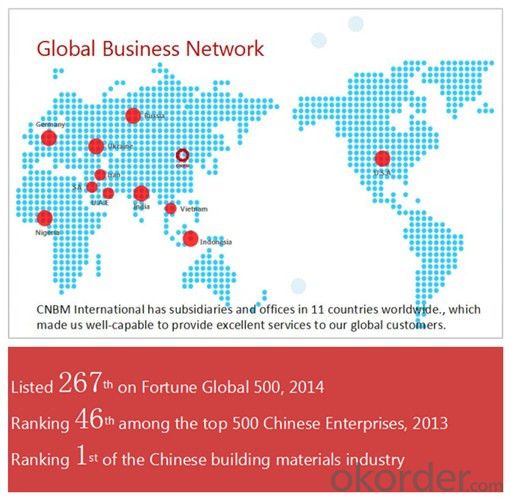
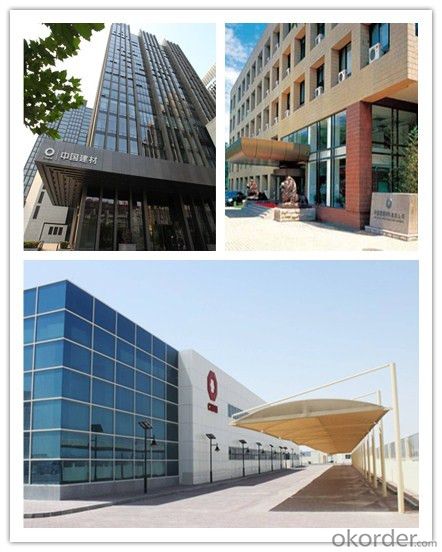
After-sale service | l CNBM provides the services and support you need for every step of our cooperation. We’re the business partners you can trust; you can relax and get on with doing business. l For any problem, please kindly contact us at any your convenient time, we’ll reply you in our first priority within 24 hours
|
Advantages
| l Industry experience over 20 years. l Shipment of goods -More than 70 countries worldwide. l The most convenient transport and prompt delivery. l Competitive price with best service. l High technical production line with top quality products. l High reputation based on best quality products.
|
Packaging & Delivery of Grade st 52.3 Mild Steel Plate Astm A36/ST37/ST52
Packaging Detail | Sea worthy packing /as per customer's packing instruction |
Delivery Detail | 15 ~ 40 days after receiving the deposit |
Products Show
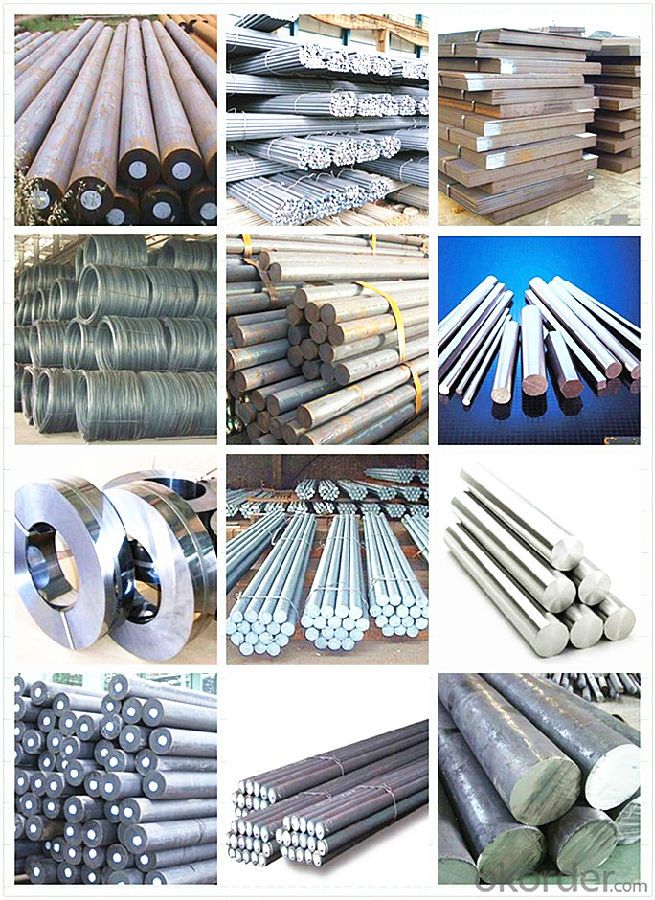
FAQ:
Are you a trading company or manufacturer? | Manufacturer |
What’s the MOQ? | 3 metric ton |
What’s your delivery time? | 15-35 days after downpayment received |
Do you Accept OEM service? | Yes |
what’s your delivery terms? | FOB/CFR/CIF |
What's the Payment Terms? | 30% as deposit,70% before shipment by T/T |
Western Union acceptable for small amount. | |
L/C acceptable for large amount. | |
Scrow ,Paybal,Alipay are also ok | |
Why choose us? | Chose happens because of quality, then price, We can give you both. Additionally, we can also offer professional products inquiry, products knowledge train (for agents), smooth goods delivery, excellent customer solution proposals. |
What's your available port of Shipment? | Main Port, China |
What’s your featured services? | Our service formula: good quality+ good price+ good service=customer's trust
|
Where are your Market? | Covering more than 160 countries in the world |
- Q: How is case-hardening steel used in the production of gears and camshafts?
- Case-hardening steel is used in the production of gears and camshafts to enhance their surface hardness and wear resistance. The process involves heating the steel at a high temperature and then rapidly cooling it, creating a hardened outer layer while maintaining a tough core. This hard outer layer allows gears and camshafts to withstand the high stresses and wear they experience during operation, increasing their durability and lifespan.
- Q: What are the different methods of surface coloring for special steel?
- There are several methods of surface coloring for special steel, including electroplating, hot-dip galvanizing, powder coating, and physical vapor deposition (PVD). Each method offers unique benefits and can be chosen based on factors such as desired appearance, durability, corrosion resistance, and cost-effectiveness.
- Q: How is special steel used in the construction manufacturing process?
- Special steel is used in the construction manufacturing process due to its unique properties and characteristics. It is commonly utilized in the production of structural components, such as beams, columns, and reinforcements, where high strength, durability, and resistance to corrosion are crucial. Special steel also finds application in the manufacturing of machinery, equipment, and tools used in construction, thanks to its ability to withstand heavy loads and extreme conditions. Additionally, it is used for specialized purposes like in the construction of bridges, skyscrapers, and other architectural marvels, where its exceptional strength and reliability are essential for ensuring the safety and longevity of the structures.
- Q: What are the requirements for special steel used in oil and gas equipment manufacturing?
- The requirements for special steel used in oil and gas equipment manufacturing are quite stringent due to the demanding operating conditions and harsh environments that these materials will be exposed to. Some of the key requirements include: 1. Corrosion Resistance: Special steel used in oil and gas equipment must have excellent resistance to corrosion, especially in the presence of various corrosive fluids such as oil, gas, and saltwater. This helps to prevent degradation and premature failure of the equipment. 2. High Strength: The steel must possess high strength and toughness to withstand the extreme pressures, temperatures, and mechanical stresses encountered in oil and gas operations. This ensures that the equipment can perform reliably under demanding conditions. 3. Heat Resistance: Oil and gas equipment often operates at elevated temperatures, especially in downstream processes such as refining and petrochemical applications. Special steel used in these applications must be able to maintain its mechanical properties and structural integrity even at high temperatures. 4. Weldability: Welding is a common joining technique used in the fabrication of oil and gas equipment. The special steel should have good weldability, allowing for efficient and reliable welding processes without compromising the overall strength and integrity of the equipment. 5. Fatigue Resistance: Oil and gas equipment is subjected to cyclic loading, which can lead to fatigue failure if the material is not properly designed to withstand these repetitive stresses. Special steel must possess good fatigue resistance properties to ensure long-term durability. 6. Low Temperature Properties: In certain applications, such as offshore drilling or arctic environments, the equipment may be exposed to extremely low temperatures. The special steel should exhibit excellent toughness and ductility at low temperatures to prevent brittle fracture. 7. Chemical Composition Control: The chemical composition of the special steel must be tightly controlled to ensure consistent and predictable material properties. This involves strict control over the levels of various alloying elements, impurities, and trace elements to meet the specific requirements of the oil and gas industry. Meeting these requirements is crucial for the safe and reliable operation of oil and gas equipment. Special steel manufacturers work closely with industry standards and specifications to develop and provide materials that meet these demanding requirements, ensuring the integrity and performance of the equipment in the oil and gas sector.
- Q: What are some examples of special steel alloys?
- There are several examples of special steel alloys that are widely used in various industries. One such example is stainless steel, which contains a minimum of 10.5% chromium, making it highly resistant to corrosion. Stainless steel is commonly used in the manufacturing of kitchen utensils, medical equipment, and automotive parts. Another example is tool steel, which is specifically designed to have high hardness and wear resistance. Tool steel is commonly used in the production of cutting tools, molds, and dies. High-speed steel is another special steel alloy that is known for its exceptional ability to maintain hardness even at high temperatures. This makes it ideal for manufacturing cutting tools used in high-speed machining operations. Alloy steel is a broad category that includes various steel alloys with specific properties. For example, low alloy steel contains small amounts of other elements such as manganese, nickel, or silicon to enhance its strength and toughness. This type of steel is commonly used in the construction industry. Furthermore, maraging steel is a special alloy that combines high strength with good toughness. It is often used in aerospace applications, such as aircraft landing gear and missile components, due to its ability to withstand high stress and impact. Overall, these are just a few examples of the many special steel alloys available, each tailored to meet specific requirements and applications in industries ranging from construction to aerospace.
- Q: Can special steel be used in the cement manufacturing industry?
- Yes, special steel can be used in the cement manufacturing industry. It is commonly used in the construction of cement plant equipment, such as kilns, crushers, and mills, due to its high strength, heat resistance, and durability. Special steel alloys are particularly suitable for applications that involve high temperatures and abrasive materials, making them an ideal choice for various components in the cement manufacturing process.
- Q: What are the different methods for improving the corrosion resistance of stainless special steel?
- There are several methods for improving the corrosion resistance of stainless special steel. Some of the common methods include alloying the steel with elements such as chromium, nickel, and molybdenum, which enhance its resistance to corrosion. Another method is passivation, which involves treating the steel with an acid solution to remove any surface contaminants and create a protective oxide layer. Coating the steel with materials like paint, powder coating, or electroplating can also improve its corrosion resistance. Additionally, proper cleaning and maintenance practices, such as regular removal of dirt and debris, can help prevent corrosion and maintain the steel's resistance over time.
- Q: What are the factors that affect the machinability of special steel?
- There are several factors that can affect the machinability of special steel. First, the composition of the steel, including the type and amount of alloying elements present, can significantly impact its machinability. Additionally, the hardness and microstructure of the steel, which are influenced by factors such as heat treatment and processing, can also affect how easily it can be machined. Other factors that can play a role include cutting tool selection, cutting speed, feed rate, and coolant or lubricant used during machining.
- Q: What are the main applications of special steel in the defense equipment?
- Special steel is widely used in defense equipment for its exceptional properties such as high strength, durability, and resistance to extreme conditions. Some of the main applications of special steel in defense equipment include the manufacturing of armored vehicles, tanks, submarines, and naval vessels. It is also used in the production of aircraft carriers, fighter jets, and helicopters, where its strength and resistance to corrosion are crucial. Additionally, special steel is utilized in the construction of ballistic protection systems, missile components, and firearms, enhancing their performance and ensuring their reliability in critical defense operations.
- Q: What are the common techniques for testing the quality of special steel?
- There are several common techniques used to test the quality of special steel. These techniques help ensure that the steel meets the required specifications and standards for its intended use. Some of the most common techniques include: 1. Chemical Analysis: This technique involves analyzing the composition of the steel to determine the concentration of various elements present. Chemical analysis helps ensure that the steel contains the required elements in the desired quantities and identifies any impurities that may affect its quality. 2. Tensile Testing: Tensile testing is used to measure the strength and elasticity of steel. It involves subjecting a sample of the steel to a gradually increasing load until it breaks. This helps determine the maximum stress the steel can withstand before failure, providing insights into its mechanical properties. 3. Hardness Testing: Hardness testing is used to measure the resistance of steel to indentation or penetration. It helps assess the steel's strength and ability to resist wear and deformation. Common hardness testing methods include Brinell, Rockwell, and Vickers hardness tests. 4. Microstructure Examination: Microstructure examination involves analyzing the steel's internal structure under a microscope. This technique helps identify the presence of any defects, such as inclusions, voids, or improper grain structure. It also provides information about the steel's heat treatment and overall quality. 5. Non-Destructive Testing (NDT): NDT techniques are widely used to test the quality of special steel without causing damage to the material. These techniques include ultrasonic testing, magnetic particle testing, liquid penetrant testing, and radiographic testing. NDT helps detect surface or internal defects, cracks, and discontinuities that may affect the steel's integrity. 6. Impact Testing: Impact testing measures the ability of steel to absorb energy under high-stress conditions. It involves striking a notched sample with a pendulum and measuring the energy absorbed during fracture. Impact testing provides insights into the steel's toughness and resistance to sudden shocks or impacts. 7. Corrosion Testing: Corrosion testing is performed to evaluate the steel's resistance to corrosion in different environments. It helps determine the steel's susceptibility to rust, oxidation, or chemical attack, which is crucial for applications in corrosive environments. By employing these common techniques, manufacturers and quality control professionals can ensure that special steel meets the required standards and specifications, guaranteeing its reliability and performance in various industries and applications.
Send your message to us
Grade st 52.3 Mild Steel Plate Astm A36/ST37/ST52
- Loading Port:
- Tianjin
- Payment Terms:
- TT OR LC
- Min Order Qty:
- 3 m.t.
- Supply Capability:
- 100000 m.t./month
OKorder Service Pledge
OKorder Financial Service
Similar products
Hot products
Hot Searches
Related keywords
